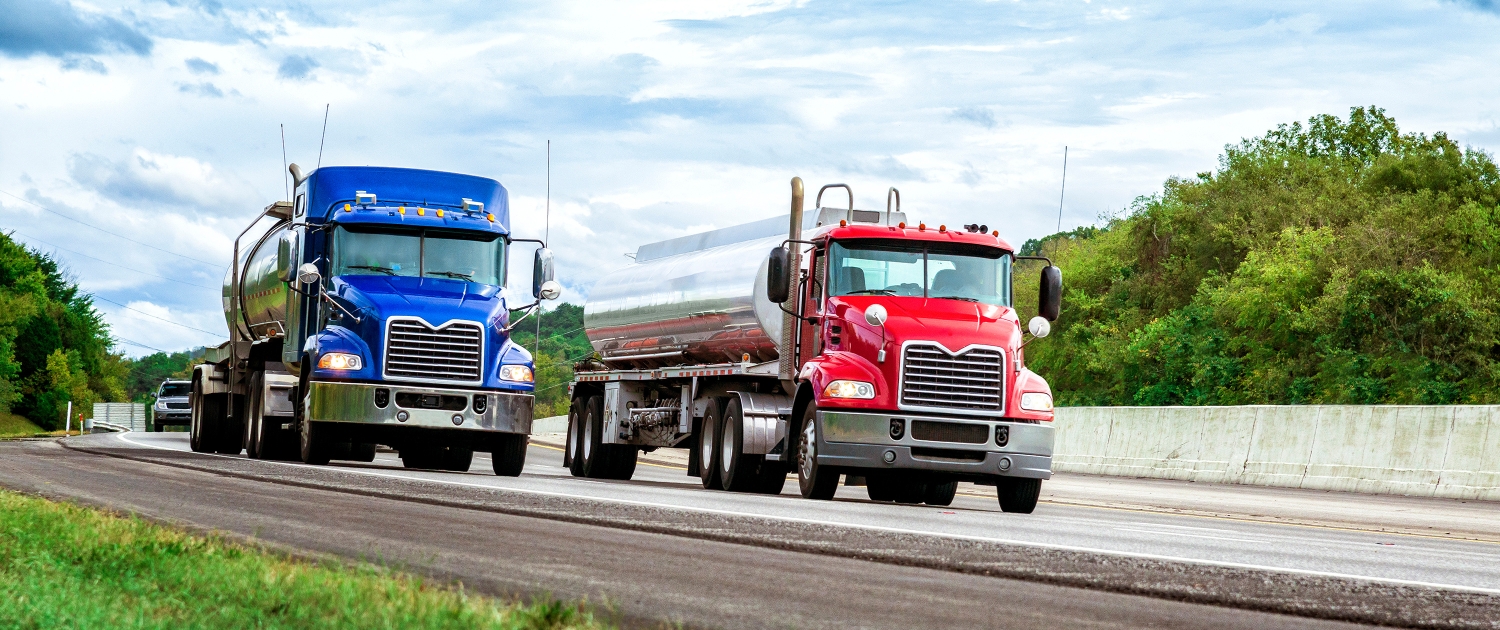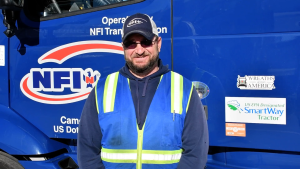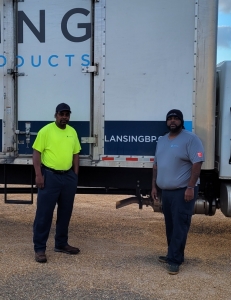
Small trucking company or large carrier? Every driver you ask will have their own opinion on which is better to work for. While there’s no one correct answer, there are pros and cons to each. Here’s what you need to know about small trucking companies vs large carriers, so you can make the best decision for you the next time you’re looking for a job.
Working for a Small Trucking Company
Pros
What drivers who work for a small trucking company probably like most about it is the fact that it’s, well, small. Drivers working for a small trucking company will often have more of a voice when it comes to operations, policies, and day to day management than they would if they worked for a large mega fleet.
Another perk about working for a small trucking company is the ability to do some things outside your normal job description of truck driving. While this is understandably not what all drivers are looking for, small trucking companies are a great place to learn new skills that will help you later in your career.
These skills could be anything from hauling different types of freight to learning the ins and outs of the financial side of the business. If you want to become an owner operator or even own your own fleet one day, this kind of experience is invaluable.
Cons
One of the biggest issues with driving for a smaller trucking company is the heightened chance that the business won’t succeed, and the driver will be left without a job. If the trucking industry goes through a rough time, it’s much easier for a larger carrier to weather that storm than it is for a smaller, mom and pop company.
Take for example what’s happened during the last few years. During and right after Covid, the number of small trucking companies and owner operators skyrocketed in response to the amount of freight that needed to be moved.
Times were good for a while, but with diesel rising to never-before-seen prices and supply chain issues still prevalent, these small operations found it hard to survive and many shut their doors. Unfortunately, this left any drivers working for these carriers out in the cold.
There’s also the chance that while working for a small company, they may begin to rely on you too much. While being part of a small team can be nice, you never want to feel like you’re being forced to take on too much because the boss doesn’t want to hire more drivers to help with the demand.
Working for a Large Carrier
Pros
In general, larger carriers will have more robust healthcare and savings plans than smaller companies. These plans include medical, dental, vision, and most of the time even life insurance. This means that you and your family will be better set up in the case of a health emergency or if some other issue arises. This isn’t to say that all smaller trucking companies won’t offer these benefits, just that on average, the plans won’t be as good.
Another benefit of working for a large carrier is their training and advancement programs. Generally, large carriers will have programs that help newer drivers, even those fresh out of CDL training, to get on the road by themselves safely and confidently.
While this benefit is mostly geared towards new drivers, seasoned truckers should also look for training and advancement opportunities when researching a new company to work for. Some carriers have paid endorsement training, management training programs, and even have courses on how to become a driver liaison.
Cons
Many drivers will cite feeling like “a number instead of a name” while working for a large carrier. This is because at a large carrier, you’re going to be one of a hundred, one of a thousand, or even ten thousand. You could work there for 10 years and still won’t get to know the owner of the company or have any say in the company’s direction. But if you’re just looking to drive and collect a paycheck, then this won’t be that big of a deal for you.
Larger carriers are also known for having tighter safety regulations and eyes on their drivers. One particularly divisive way they could do this is by using driver-facing cameras inside the cab. While measures like this can lead to safer driving, more experienced drivers may feel like they’re having someone breathing down their neck when it’s not needed.
It’s important for drivers who are looking for a new job to remember that every carrier is different and won’t always fit into one of these neat buckets just because they’re a small company or a large carrier. It’s important to do your homework while looking for a new job and ask the right questions when you’re speaking with a recruiter or hiring manager to see if you’ve found the right place for you.
Looking for a new CDL Job?
Drive My Way matches you with a job based on your preferences like pay, home time, touch level, and more.






 Wreaths Across America describes their overall mission in three simple words, “Remember, Honor, and Teach.” Remember our fallen U.S Veterans, honor those who have served, and teach your children the value of freedom.”
Wreaths Across America describes their overall mission in three simple words, “Remember, Honor, and Teach.” Remember our fallen U.S Veterans, honor those who have served, and teach your children the value of freedom.”  In 1992, after finding his company had a surplus of wreaths after the holiday season, Morrill Worcester, owner of the Worcester Wreath Company made a large donation of 5,000 wreaths to Arlington National Cemetery. Worcester continued making donations like this for the next 15 years, and it eventually caught on to the point that thousands of other people wanted to join in on the good cause.
In 1992, after finding his company had a surplus of wreaths after the holiday season, Morrill Worcester, owner of the Worcester Wreath Company made a large donation of 5,000 wreaths to Arlington National Cemetery. Worcester continued making donations like this for the next 15 years, and it eventually caught on to the point that thousands of other people wanted to join in on the good cause.  While everybody can get involved with Wreaths Across America by donating a wreath, truck drivers are unique in their ability to help even more. Through their carrier, truck drivers can volunteer as drivers for Wreaths Across America, transporting wreaths to locations where their events are held.
While everybody can get involved with Wreaths Across America by donating a wreath, truck drivers are unique in their ability to help even more. Through their carrier, truck drivers can volunteer as drivers for Wreaths Across America, transporting wreaths to locations where their events are held. 

 No trend in 2020, 2021, or 2022 has been more pronounced than the rapid pace of
No trend in 2020, 2021, or 2022 has been more pronounced than the rapid pace of  This trend is starting to become clearer in NTI data on driver wages and benefits, but increasingly, motor carriers will move toward pay packages that promote safety and move away from pay packages that promote productivity.
This trend is starting to become clearer in NTI data on driver wages and benefits, but increasingly, motor carriers will move toward pay packages that promote safety and move away from pay packages that promote productivity.  A frustration long held by professional drivers is inconsistent and lumpy paychecks week to week — particularly for causes outside of their control, such as
A frustration long held by professional drivers is inconsistent and lumpy paychecks week to week — particularly for causes outside of their control, such as 
 Scheduling flexibility may not sound like it’s directly tied to a driver’s paycheck — but it can and should be viewed as an element of a fleet’s driver compensation package and a vital component of recruiting and retention programs.
Scheduling flexibility may not sound like it’s directly tied to a driver’s paycheck — but it can and should be viewed as an element of a fleet’s driver compensation package and a vital component of recruiting and retention programs. 






 BlueGrace Logistics, based in Riverview, Fla., announced that Warburg Pincus agreed to an investment of $255 million in the firm, Transport Topics reports. Also, that includes committed capital and direct investment to increase growth and acquisitions.
BlueGrace Logistics, based in Riverview, Fla., announced that Warburg Pincus agreed to an investment of $255 million in the firm, Transport Topics reports. Also, that includes committed capital and direct investment to increase growth and acquisitions.
 While CDL trucking jobs may be the first thing that comes to your mind when you hear XPO Logistics, this article about the company’s latest news centers on its further expansion in the healthcare sector.
While CDL trucking jobs may be the first thing that comes to your mind when you hear XPO Logistics, this article about the company’s latest news centers on its further expansion in the healthcare sector.
